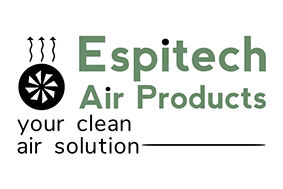Why VOC removal is important for you
Removing Volatile Organic Compounds (VOC)
Unless you live in a bubble, you are constantly exposed to varying levels of volatile organic compounds in your home. Every single day.
These organic chemicals get into our ambient air when they are emitted from materials we use during construction or products we use indoors. A 2006 study measuring VOC levels in newer and older homes during a 3-year period found that VOC levels were highest in newly-built homes, that levels markedly decreased after one year and that there was no significant fluctuation in the older homes.
products we use indoors. A 2006 study measuring VOC levels in newer and older homes during a 3-year period found that VOC levels were highest in newly-built homes, that levels markedly decreased after one year and that there was no significant fluctuation in the older homes.
Still, even if you don’t move from new home to new home, a mix of volatile organic compounds will always affect your indoor air quality. The levels may not be high enough to cause acute reactions, but experts have been ringing the alarm bells over the possible health effects of long-term low exposures.
Fact is, high levels of volatile organic compounds are a health risk. When exposed to higher concentrations of certain VOCs, the EPA says you may experience symptoms such as eye and respiratory tract irritation, headaches, dizziness, visual disorders, and memory impairment.
Some VOCs have been shown to affect the liver, kidneys and the central nervous system. Others may cause cancer in humans.
Pretty much all materials and many products used in modern construction off-gas VOCs. There are thousands of sources on the market, according to the EPA.
The most common sources of VOC's include:
- Paints
- Lacquers
- Varnishes
- Cleaning products
- Aerosol sprays
- Moth repellents
- Hobby supplies
- Air fresheners
- Disinfectants
- Dry-cleaned clothing
- Cosmetics
- and more
The removal of VOC's is important for everyone not living in a cave, then. And even if we can’t switch the building materials that were used to build our homes, we can always be mindful of volatile organic compounds when we choose to use certain household products, when we are doing renovations and in our everyday household management.
Here are some tips for reducing your VOC exposure:
- Switch to healthier products
- Increase ventilation when you use products that release volatile organic compounds
- Only buy what you need and don’t store harmful products
- Read labels and use products according to the guidelines
- Do not store products that you won’t need anytime soon. Gases and VOC's often leak from containers (think old paint cans, cleaning products, oil tanks, bleach containers and more). It may not be the best idea to store these products in the basement next to the family room, for example. If you store them in the garage, make sure that the door to the house seals well to prevent VOC's from entering the home. And don’t throw these products into the garbage! Most communities offer ways to dispose of “hazardous household items” safely.
- During those seasons or times when you can’t open windows, use an air purifier. These need an activated carbon filter in addition to a HEPA filter to remove VOC's. They won’t protect you from high levels of VOC's when you are using hobby products (unless they have a source capture attachment), so be cautious when using those products.
- Apply integrated pest management methods to reduce the need for pesticides. This means that you monitor and identify insects and pests and use common-sense methods to prevent these from becoming a problem. Pesticides should be a last resort.
- Do not use air fresheners. Air freshening products have been identified as sources of VOC's in the home.
- Opt for low-VOC or no-VOC cosmetics and personal products. If you’re using tons of hairspray, perfume and similar products, you are contributing to the VOC count in your home.
- Be careful when using a dry cleaner and let clothes air out before bringing them indoors.
Making small changes can have a huge impact on the VOC levels in your home.
For example, when the Canadian organization Environmental Defence tested VOC levels in Canadian homes before and after the use of conventional cleaning products, the results were shocking.
In all homes, VOC levels rose during the cleaning process, but there were huge differences between “normal” cleaning products and green versions. However, unverified green claims (undisclosed ingredients on the label) meant that users were exposed to almost as many volatile organic compounds as those using the conventional cleaning products. Reading labels is important when you are trying to reduce VOC exposure.
Who should be most concerned about VOC removal?
We should all be mindful of the air quality around us, but if you have children or pets, you need to be extra careful. Not only do many VOC-containing products pose a risk for poisoning, they could also contaminate the air your children are breathing. Children are most vulnerable to VOC exposure since they are still growing and building immunities.
According to Children’s Environment, children may have more exaggerated responses to VOC's as compared to healthy adults.
Source links:
http://www.ncbi.nlm.nih.gov.pubmed/16507040
http://environmentaldefence.ca/articles/first-its-kind-study-shows-cleaning-products-pollute-indoor-air-put-canadians-risk-dangerou
http://www.epa.gov/iaq/voc.html
http://www.childrensenvironment.ca/sources-of-contamination/vocs/
| Applications | Why Allerair | Air Purifier Models - Series | Filtration Guarantee |
| Home | Home & Office | Industrial & Commercial | FAQ | About Us | Contact Us |
| AllerAir Price List | Electrocorp Price List |
* Free Ground, Standard Shipping to the Continental US and Canada / Specs & Prices subject to change without prior notice | Call to order your replacement filters
Electrocorp Air Rhino Air Scrubbers- https://www.airwashsystems.com
© 1996-2024Produits D'Air Espitech, SENC ( Espitech Air Products) All Rights Reserved. All pages and their content are provided as information only. Use of this online service is subject to the disclaimer and the terms and conditions.

